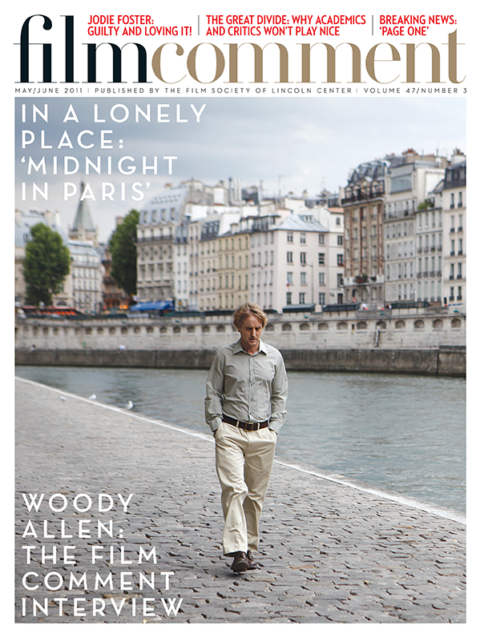
Review: !Women Art Revolution
It’s been 40 years since the onset of the Women’s Liberation Movement, but its television miniseries history has yet to be produced. Why the history of Second Wave Feminism does not warrant its own Eyes on the Prize is another story, but in the meantime we have Lynn Hershman Leeson’s bold new documentary !Women Art Revolution, which reexamines Women’s Lib through the lens of the incendiary feminist artists who ignited a cultural revolution.

Inspired by the politics of the civil rights and antiwar movements, the Feminist Art Movement took on the male-dominated, sexist, and racist art institutions of the Sixties, challenging the barriers facing women within them and beyond. Hershman Leeson’s prescient instinct to document her peers from the time she was a radicalized Berkeley student to the present day creates an intimate, insider portrait of the most influential art movement of the late 20th century. Distilling hundreds of hours of cross-generational interviews with key artists, critics, and curators, this exhaustively researched film charts the progress and shares the insights of the women artists—and Guerilla Girls—whose provocative activities rocked the patriarchal art establishment. Weaving photographs, documents, ephemera, animated graphics, graphic-novel illustrations, and a rocking original score composed by former Sleater-Kinney guitarist Carrie Brownstein, !Women Art Revolution moves beyond chronicle to pose deeper questions about the interdependence of art, politics, and society, the nature of power, and the inherent subjectivity of any historical record.
From the founding of feminist art schools, collectives, galleries, journals, and museums, to the provocative and often hilarious attacks on staid institutions, these activists created a national underground movement for which there is no contemporary corollary. While today’s museumgoers still can’t name three women artists (“Frida who?”), the sexism and exclusion experienced by Hershman Leeson’s generation was staggering and continuous. Laughable televised footage from 1990 reveals U.S. congressmen in ferocious debate over the “pornographic” nature of The Dinner Party, Judy Chicago’s unexpectedly controversial 1974-79 work, which most of them had never laid eyes on. In addition, accounts of failures, infighting, and regrets provide another cautionary tale of the fragility of movements that require so much uncompensated labor and sacrifice.
Unlike that PBS documentary we’re still waiting for, this is a work that could have only been made by an accomplished artist. Of the many contributions feminists made to contemporary art practices, the insistence that art and politics cannot be separated, that the body—the personal—is political, drives Hershman Leeson’s work as well. Fusing history with memoir, she enlists multiple strategies to produce an elegantly layered visual and sonic web of politics and powerful emotion. Well known for her earlier artwork, Hershman Leeson has also written and directed several features in collaboration with Tilda Swinton (Teknolust, Strange Culture) that all explore relationships between new technologies and identity. Perhaps that’s why this film feels so of the moment. The cross-historical, nonlinear approach revisits such heavy hitters as Yvonne Rainer, Faith Ringgold, Martha Rosler, Adrian Piper, and Nancy Spero multiple times over the decades, while also including the perspectives and work of subsequent generations. The names of crucial players and events are too many to list here; as Hershman Leeson laments, the film represents “a nanocell in the DNA of an international experience, most of which is not included.” But that recognition is one of !Women Art Revolution’s strengths, since the interrogation of omission is what ignited the movement, and is what, for better and worse, keeps it alive.







